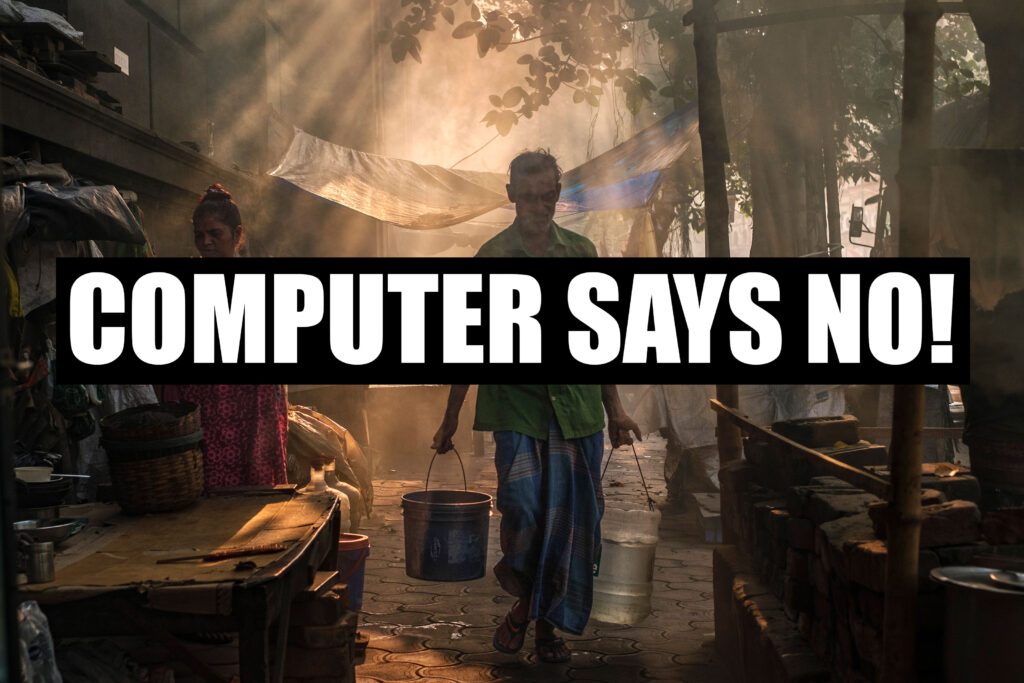How reliable is AI as a photo critic?

As photographers, we all reach points in our creative journey where we seek honest, insightful feedback, whether it’s just for improving our own creative work, or for images that we might be considering entering into competitions and awards.
It’s a fact that constructive critique, taken on board by the photographer, is one of the fastest routes to growth. In recent years, AI tools—such as ChatGPT—have emerged as a new resource for receiving feedback on images. While they are not a replacement for human mentors, peers, or personal intuition, but they can offer a surprising amount of clarity and structure when used well.
But what exactly can AI tools offer photographers seeking critique?
Technically-focused feedback
AI models excel at analysing the technical building blocks of an image once you provide a description or upload the photo (where this is supported). These tools can comment on elements such as composition, exposure, colour balance, contrast, sharpness, and depth of field with consistency. This it because AI has been trained on vast examples of photographic principles; so it can articulate these points in clear, structured ways.
For those at the beginning of their photography journey — those who are looking to understand the more technical aspects of camera work and image crafting — this can be very helpful in identifying issues like blown highlights, cropping, or imbalanced composition and so on; the details that might be overlooked when you’re still learning the fundamentals.
After a few rounds of seeing your work assessed in terms of composition, subject intent, visual tension, or storytelling clarity, you may start internalising those frameworks. For more experienced photographers, this can be a useful mental refresher of the core elements of basic elements of image construction.
For beginners who might feel self-conscious sharing their images with others, AI can provide a low-pressure starting point. It can also help experienced photographers get quick preliminary impressions before sharing with peers or clients.
Whether you are shooting portraiture, street, landscape, macro, or abstract conceptual work, AI tools can pull from a wide pool of photographic knowledge. If you indicate the genre, the tool can tailor its critique using conventions, expectations, and stylistic norms common to that category.
What AI cannot do — and why this is important
Good photographs are more than correct exposure lines and balanced compositions. They evoke emotion, prompt memory, and explore meaning. AI can describe the visual cues that suggest emotion, but it cannot actually feel nostalgia, tension, serenity, or heartbreak.
This is one of the biggest limitations of AI critique: it cannot respond to the human experience your photograph is meant to capture or communicate. For images rooted in personal history, cultural symbolism, or subtle emotional nuances, only a human viewer can truly tell you whether the story resonates.
It’s also important to understand that when AI critiques images, it is doing so without an awareness of any rules or conventions that you’re deliberately breaking in order to enhance your image or to create tension in your image. It may identify these as weaknesses and actually tell you that what you have done with creative deliberation is a weakness. In cases like this, you need to take AI feedback with several pinches of salt and stand your ground.
Typical instances of these “AI fails” often have to do with deliberate artistic decisions you may make as a photographer. You may compose for asymmetry or negative space, but AI tools have been trained on the technical “rules” of image-making, and so may suggest symmetry or a tighter crop instead. Imagine AI as someone who has read all the books on “the rules of photography” and is providing you with feedback based on these rules without a clear understanding of how they may impact the final image.
AI is algorithm which has been trained using content that is available in the greater World Wide Web. It relies on “book learning” and not from experience. It has not completed hundreds or thousands of shoots and assignments, has not learned from making mistakes or from intuitive flashes that come from human creativity. It can’t match the nuanced advice a human critic gives after watching your progress over time.
AI cannot predict how viewers can react to your image. Viewer reactions depend on cultural background, personal taste, emotional state, and countless other factors. AI does not have access to real-time human reactions, and it cannot test your image with real viewers.
Context is king
AI will assume a generic purpose behind your image and provide fairly bland (and often banal) critique, unless you provide a context for its assessment. If you ignore context, then the critique can feel misaligned and be misinterpreted by the photographer. Without knowing what you were trying to achieve, AI can only evaluate what it sees visually, not whether you have met your artistic goal.
Give as much contextual information as possible if you’re using an AI tool to assess an image: the genre, how long you have been photographing, what the theme or intent of the photograph is, the situation in which you took the photo, and so on. The more information the tool has, the more useful the feedback will be as it can take contextual information into consideration when shaping its response.
Be wary of compliments
If you submit an image to an AI tool and ask for feedback, chances are it will begin with a glowing review of your work before it begins to suggest areas for improvement. An uncritical photographer may get quite excited by the initial positive feedback, but this comes with a strong caveat: AI is designed to be polite, supportive, and constructive; its training encourages it to soften critique so users don’t feel discouraged. Understanding this design bias is essential if you want feedback that genuinely helps you improve your craft.
As an example, the AI tool may begin feedback praising the composition of the image, even if the composition is merely adequate and there isn’t any inherent strengths in it. The tool is designed to lead with compliments and praise to draw us in, and it’s simply fulfilling its programming. If you don’t recognise this behaviour, you may take the compliment at face value and miss the weaknesses that matter.
In most cases, the tool provides positive points that are observable. If it says your colour harmony is strong or your subject separation works well, it’s usually because these elements are genuinely present. However, the reliability of the compliment depends on two things:
- How specific the tool is being forced to be.
If you ask for general critique, you’ll get general praise. - How much context you have provided.
If you say nothing, the AI will assume nothing—and compensate with broad, safe positivity.
If you want accuracy, you must calibrate the tool, by telling it what kind of feedback you are after — both positive and constructive feedback.
Beware of generic feedback, such as: “The composition is nice and there is strong subject placement.” On face value, this doesn’t say anything: “nice” and “strong” need further qualification.
The more detail you provide in your request for critique (eg. genre, intent, what you’re concerned about, possible weak points), the more targeted the feedback will be. For example: “You mentioned this is a documentary street scene. Your choice to frame the subject just off-centre with a slight dutch tilt adds tension that works well with your intention of capturing spontaneity.”
If you are looking for useful constructive criticism, then you need to tell the AI tool to dispense with the false compliments and only provide positive feedback if it affirms particular strengths in the image, for example:
“Avoid generic praise. If you can’t identify a specific strength, you may omit positives.”
“Only give positive comments if they are tied to concrete visual elements.”
“List strengths only after listing weaknesses, and make the strengths descriptive rather than complimentary.”
Toughen up!
If you believe in the value of constructive feedback, then ask the AI tool to be tough on your image: request brutal but honest and constructive feedback to help counteract its built-in friendly, polite and supportive bias. Ask something like: “Provide critique as if you were a strict photography judge, not a supportive mentor.”
Always interpret positive feedback provided by AI tools through your own creative filter. If the positive comment aligns with your intention, great. If it doesn’t, treat it as a neutral technical observation rather than a value judgment.
There is one caveat: if you ask the AI tool to be super-critical or brutal in its assessment of the submitted image, then it will specifically look for faults, even if the faults are minor or inconsequential. AI is a tool that wants to do what it is told to do; so if you ask it to give harsh criticism, then it will look for areas that may be interpreted as flaws according to its “book learning” (even if these may not be flaws).
Can AI ever replace a human critic or photographic judge?
If you have ever entered images into photographic competitions and awards where critique is provided by human judges and assessors, then you’re probably aware that the level and value of critique varies from judge to judge. More experienced judges will be able to lean into their visual literacy and experiences to provided feedback that is on target and which understands your photographic intent. Less experienced judges will often rely on technical aspect simply because they are unable to see further into your image. These judges tend to favour rules over substance in order to come across as authoritative and knowledgeable.
AI cannot replace the human capacity to perceive nuance, emotion, and intention. A human judge brings lived experience, cultural understanding, and emotional intelligence to their evaluation. They can sense when an image deserves an award because it carries a profound story or an unmistakable spark of originality. They can appreciate risks, creative leaps, and subtle gestures that fall outside textbook rules but elevate the photograph into something memorable. AI can acknowledge “visual cues of emotion,” but it cannot feel them or understand their impact on a viewer.
Take away points
AI is extremely good at identifying visual patterns, but it cannot feel emotion or understand nuances. Compliments about “mood,” “emotion,” or “atmosphere” are approximations based on visual cues, not emotional impact. This can be misleading.
So take the positives as a starting point, not the final word. Use them as stepping stones, not validation.
In the end, the best AI critique comes not from its general behaviour, but from how clearly you instruct it. Set boundaries. Remove the complimentary fluff. Demand specificity, honesty, detail. And remember: the image succeeds not because AI says so, but because you know what you’re trying to say with it.
One final caveat
AI tools, while useful, are also continuously trained by its interaction with users and with the content that users ask it to access, review, consider or critique. If you upload or submit your image into an AI tool so that it can provide constructive criticism, then the tool will use your image to train other aspects of its algorithm. It may even be used to train its generative AI image tools. While you always retain the rights to your image, submitting images to an AI tool gives it developers permission to use your image as part of its training.

No Comments